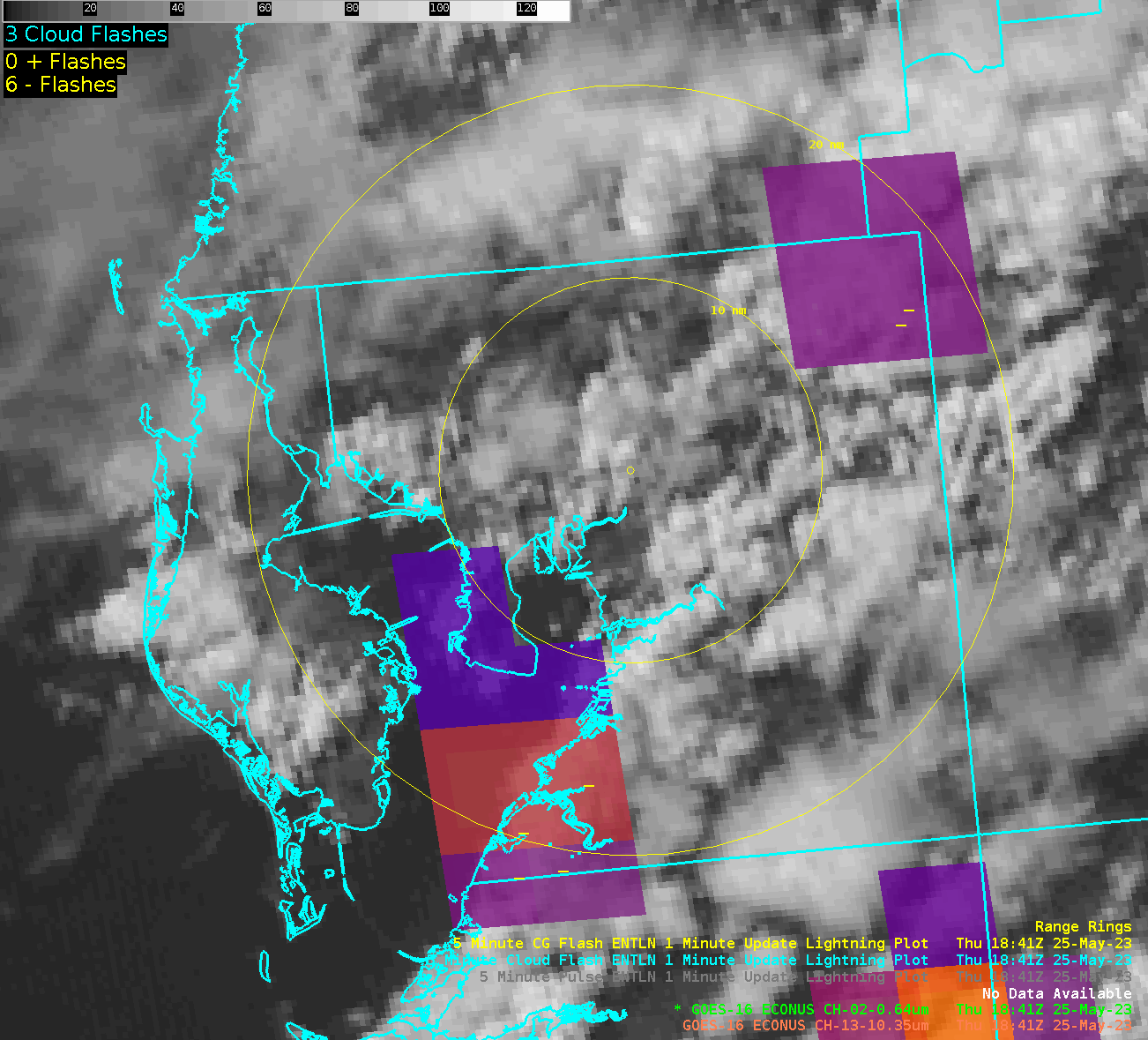KSHV radar trends illustrate a cold-pool dominated, weak MCS approaching the NW corner of the CWA. Many satellite products illustrated a consistent mainly sub-severe weather episode unfolding giving increasing confidence in the near-term forecast and expected impacts. Focus would be on any stronger individual updrafts for potential isolated severe thunderstorm warnings.
Overall, there was high confidence in approaching thunderstorms per radar and LightningCast data pinpointed the ongoing widespread nature of the convection, given several embedded impulses of GLM spikes behind the leading southeastward surging outflow boundary:
East Octane SpeedDirCTD-CTD_4Pan procedure provides more calculated parameters on top of RGB and ABI products to quickly diagnose convective strength/intensity.
The top 3 panels below (OCTANE speed, direction and Cloud-top Cooling and Divergence) identify a large-scale cirrus canopy with embedded updraft impulses.
Situational awareness was enhanced by adding on local KSHV and KLZK radar which helped to identify a SSW to NNE boundary and associated CI ahead of the main line, which OCTANE products began to illustrate (see center of each product, identifying increasing speed/directional divergence colocated to the convection along the boundary)
Given the environmental parameters, this would have been a location to examine for the potential of a severe thunderstorm warning, especially if associated radar trends (RIJ via radial velocity) indicate increasing downdraft wind potential.
– RED11248















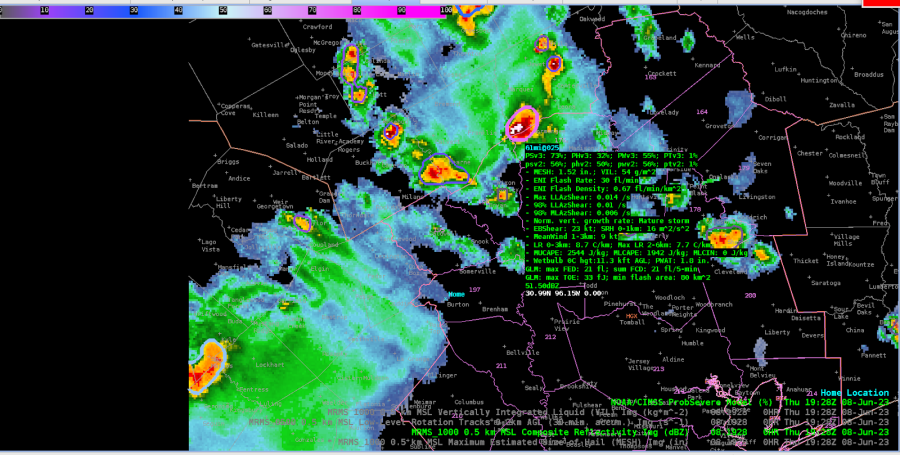

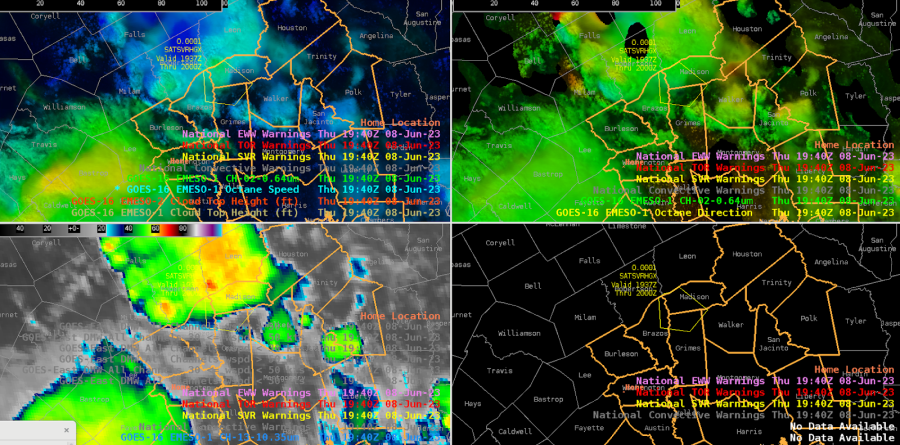
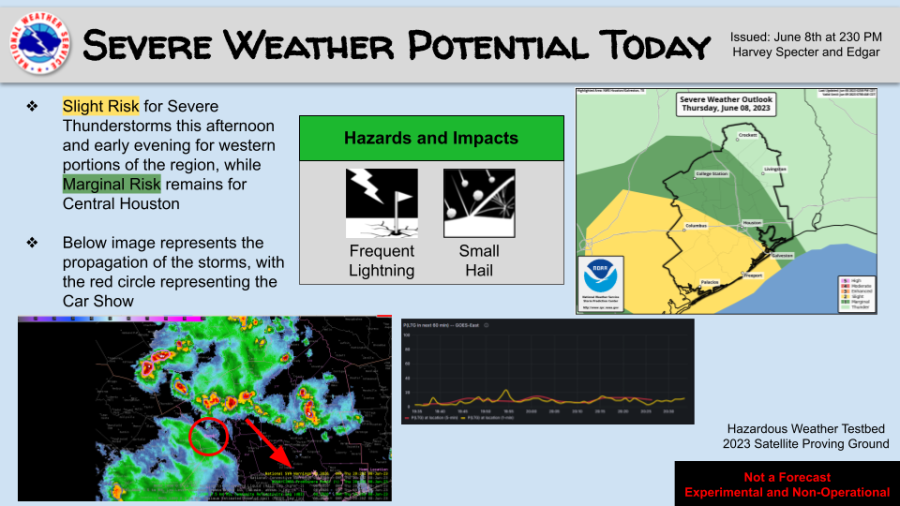
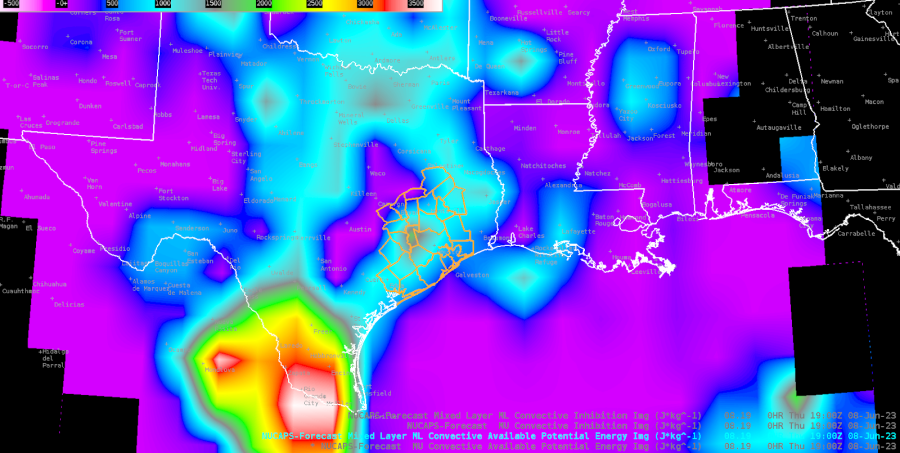
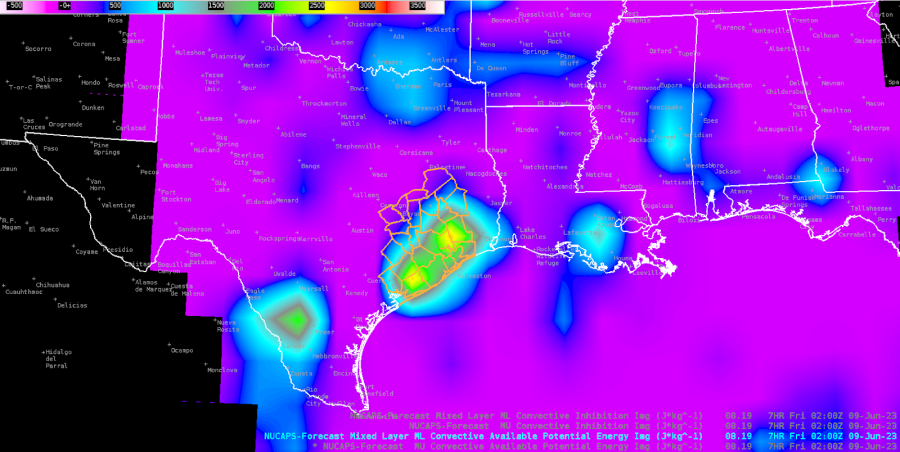
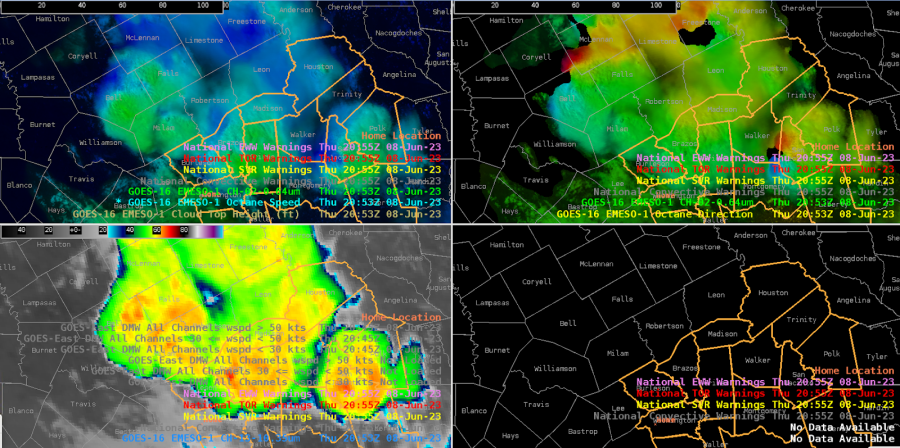
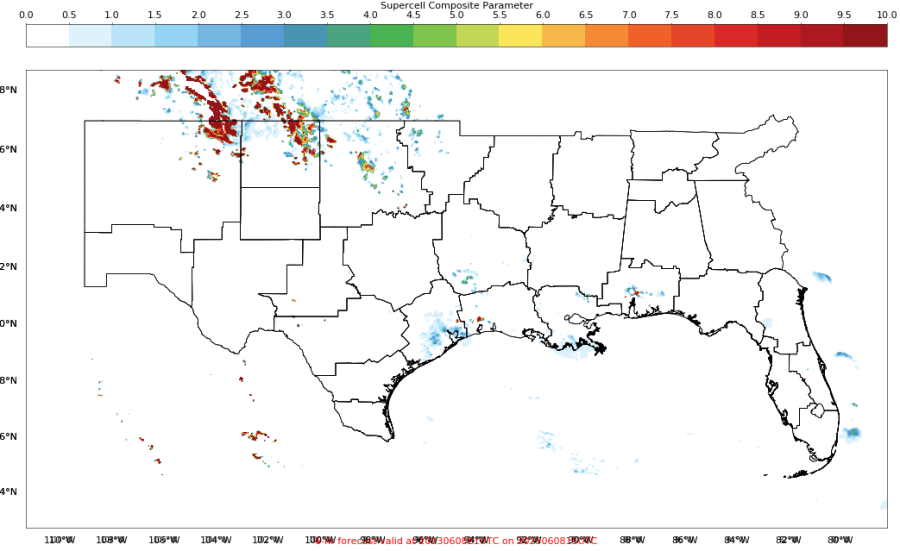
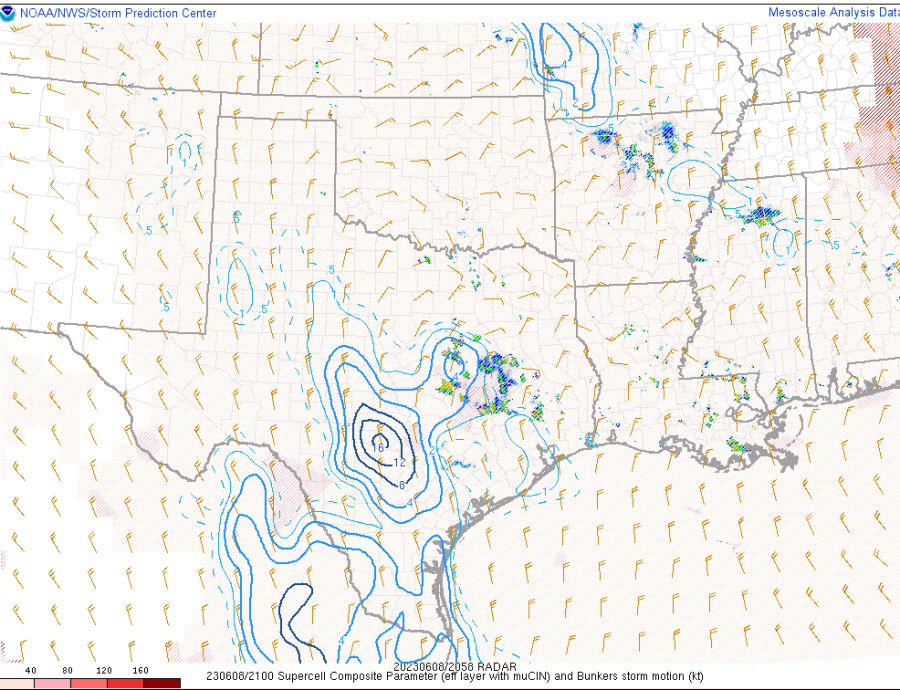
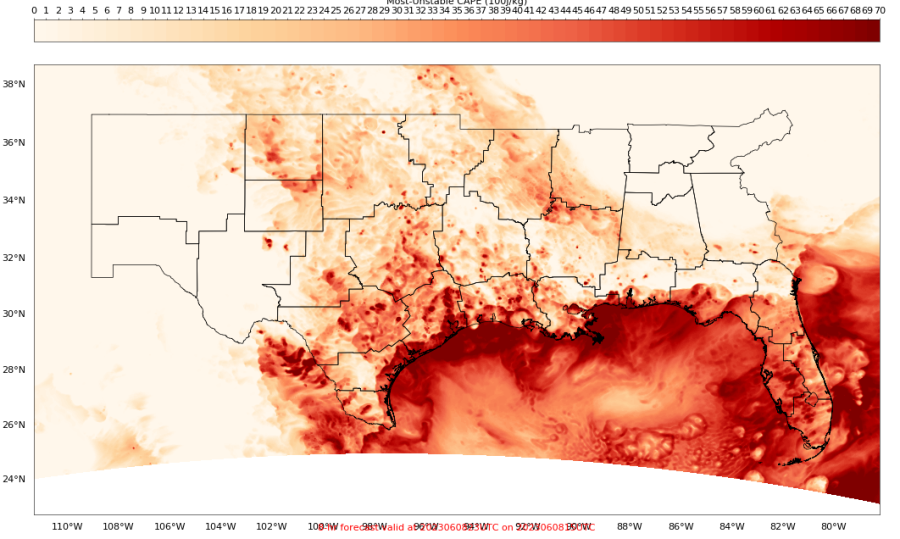
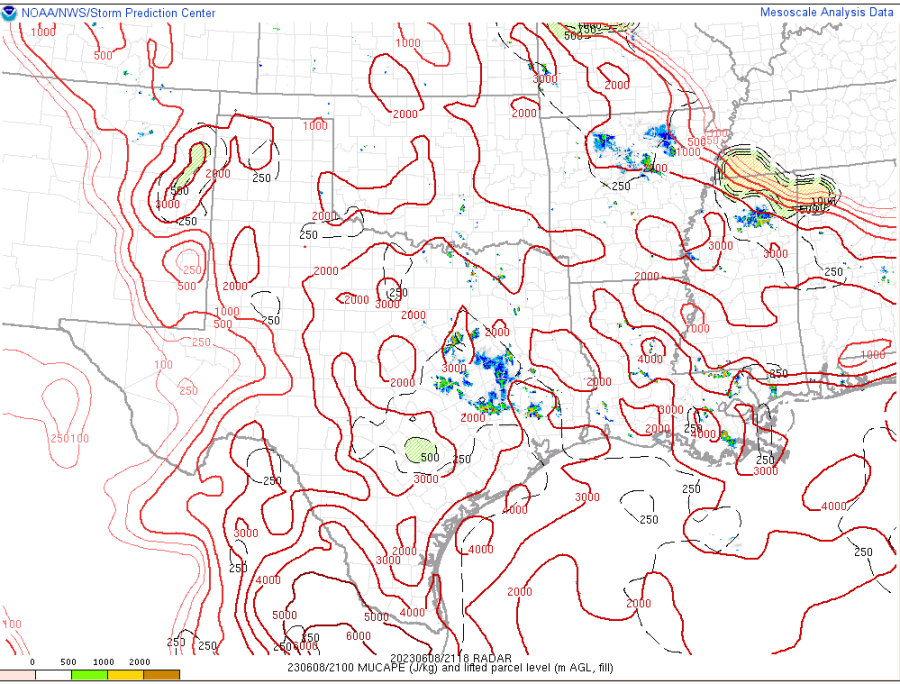
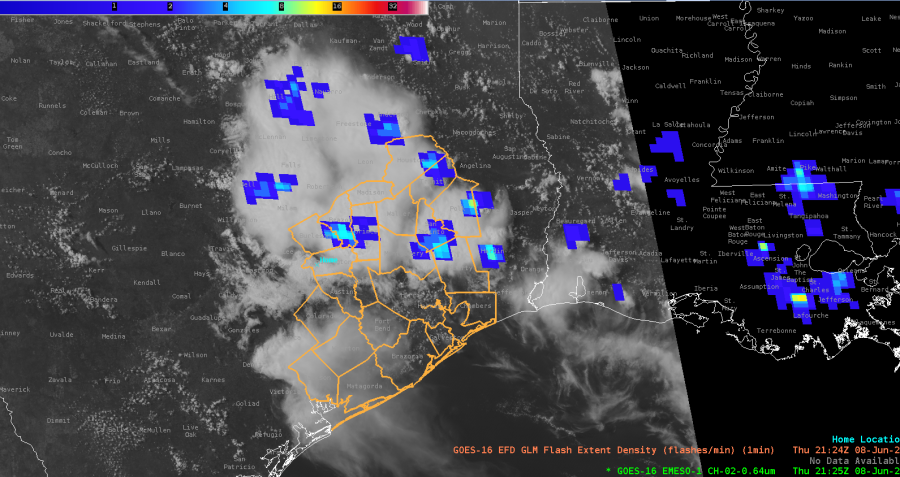
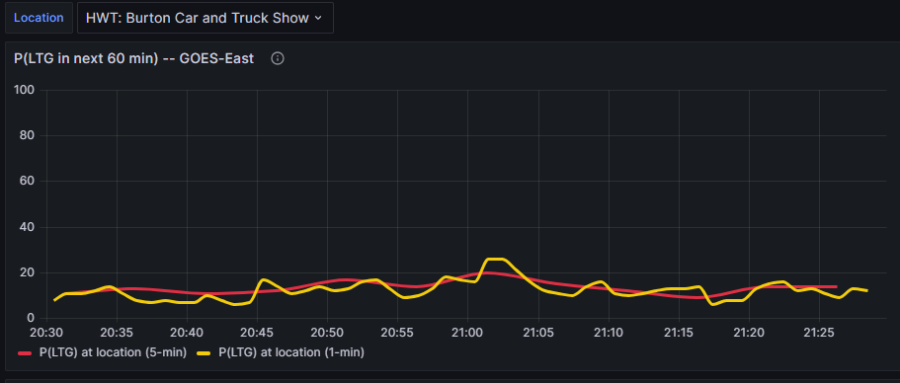
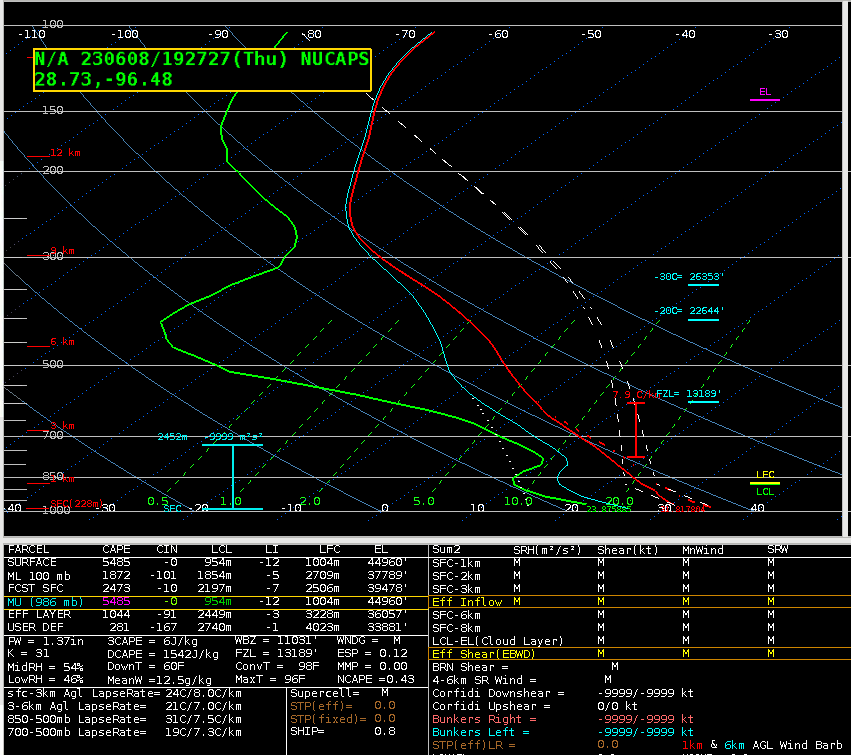
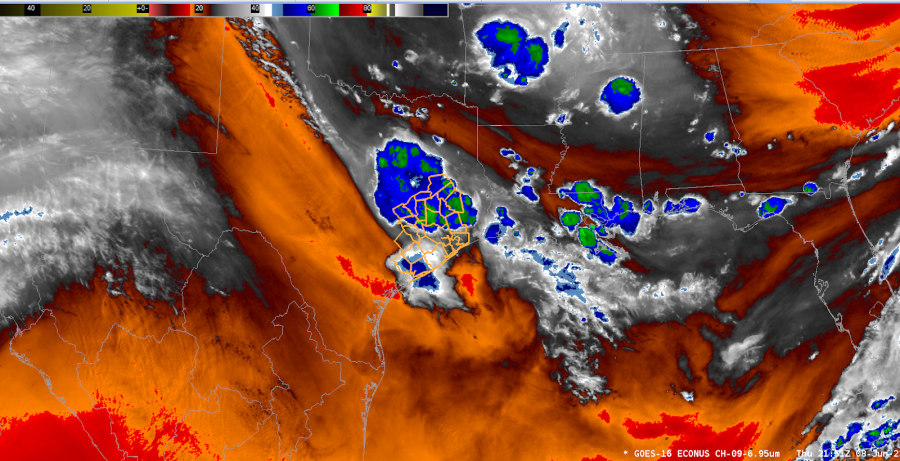
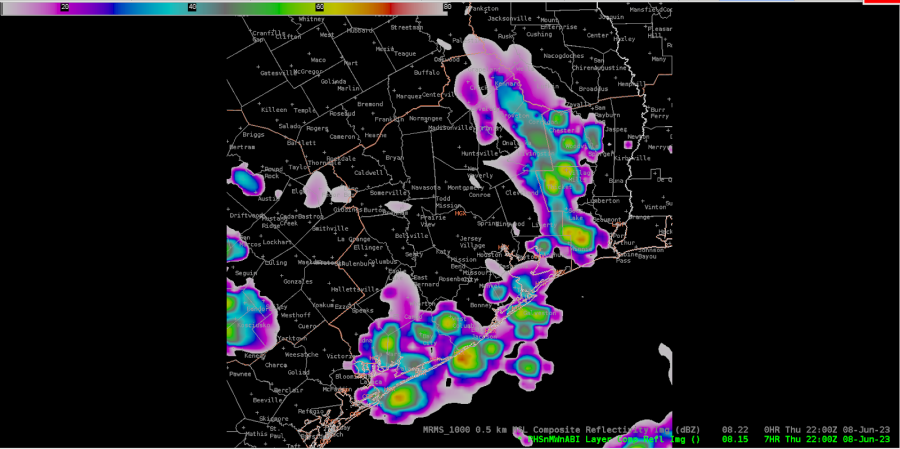
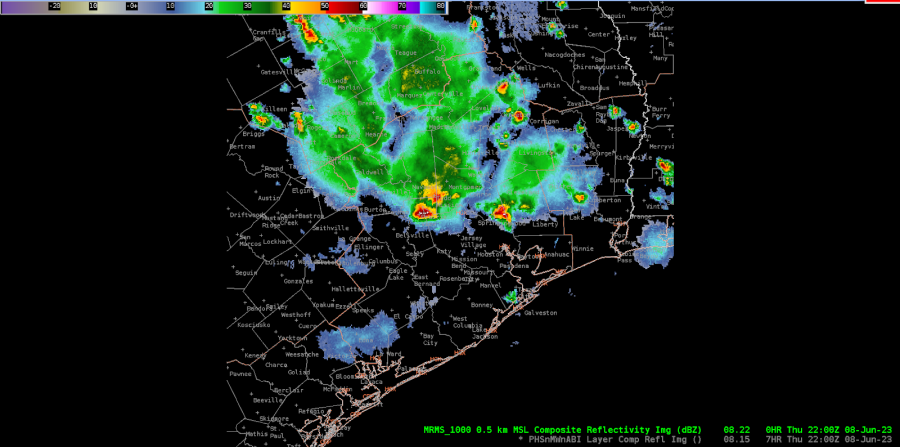
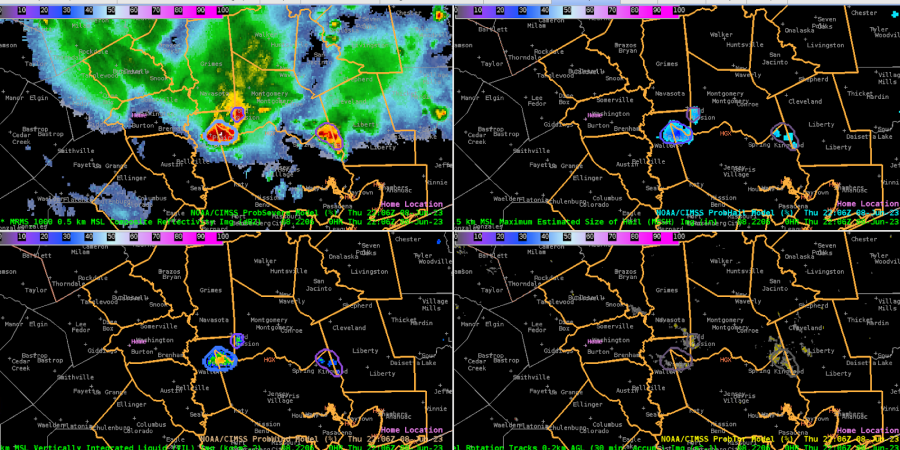
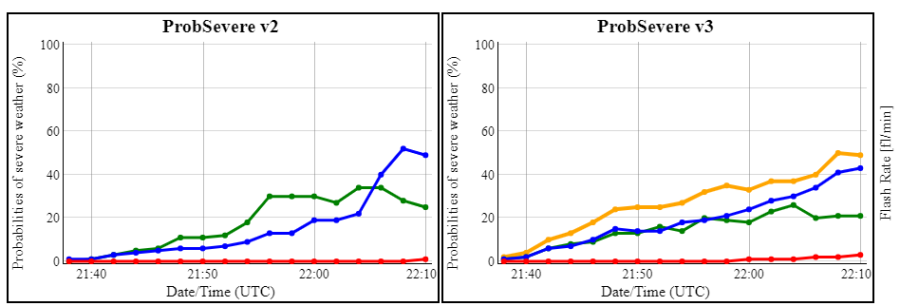
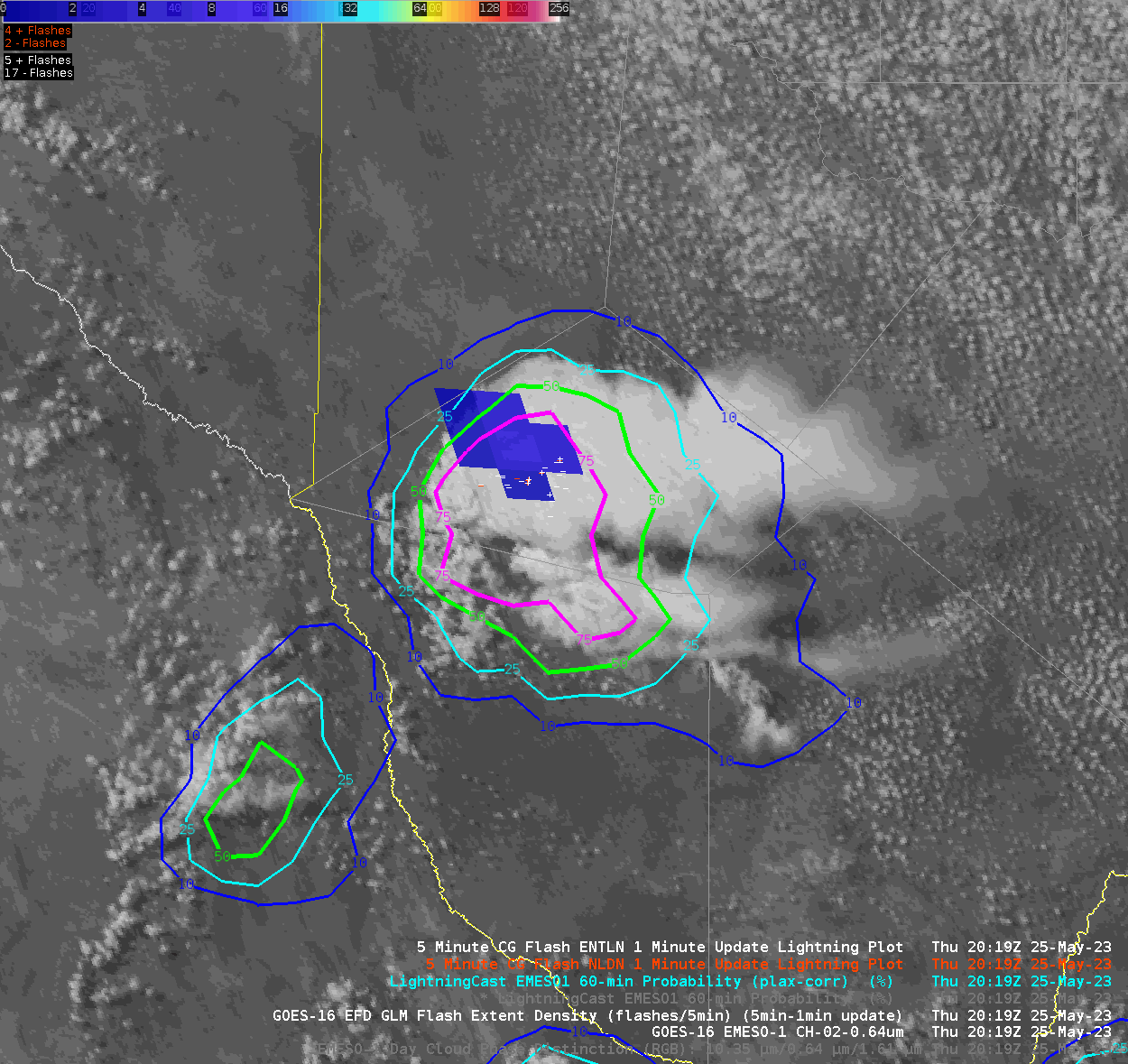
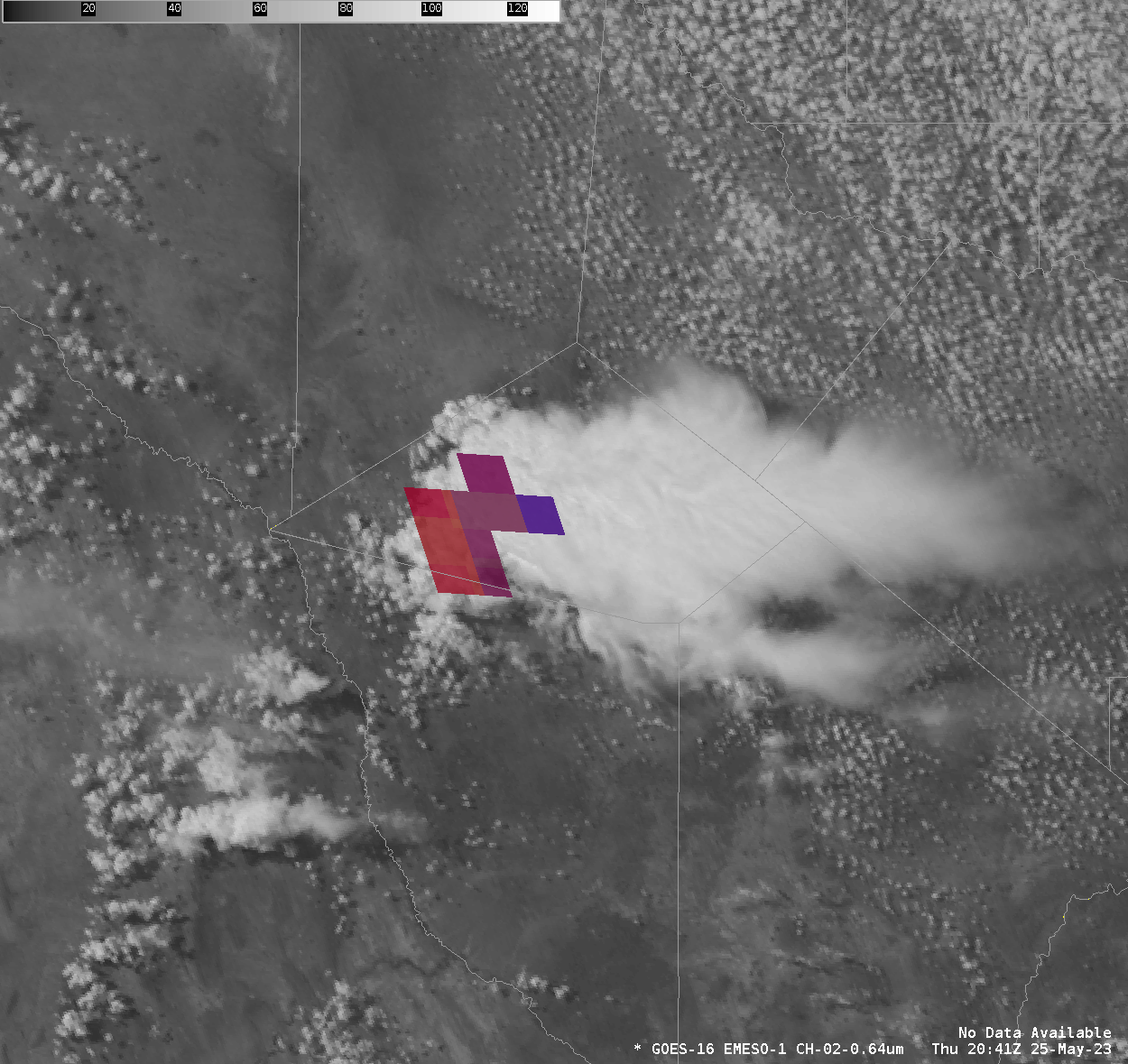 -Champion
-Champion
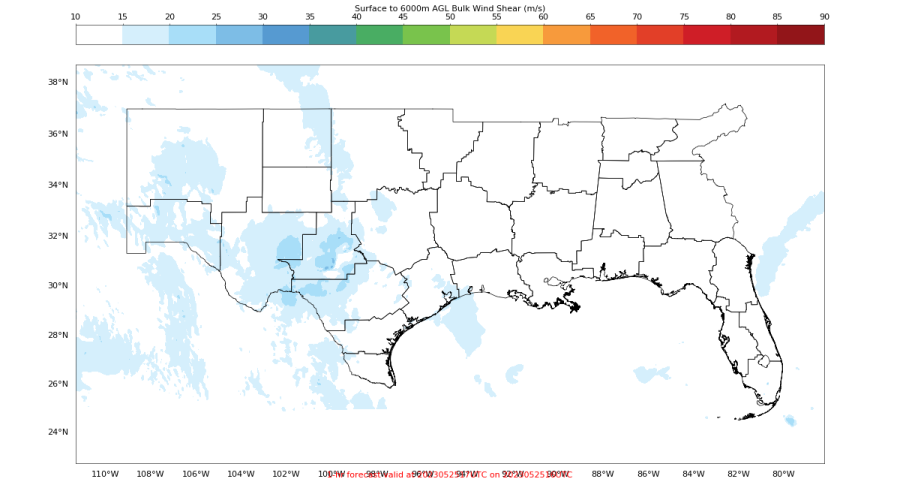
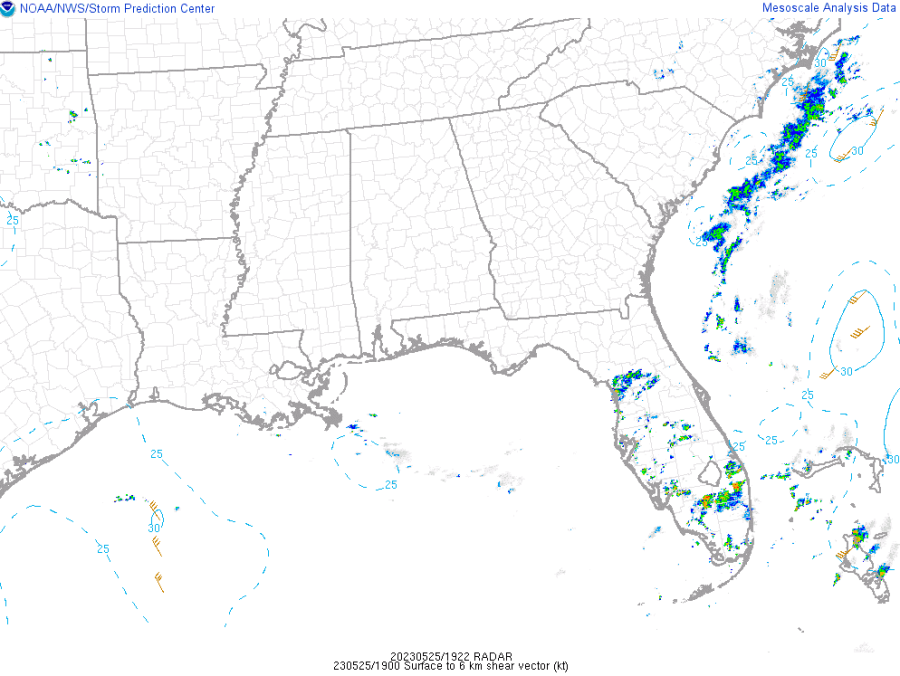
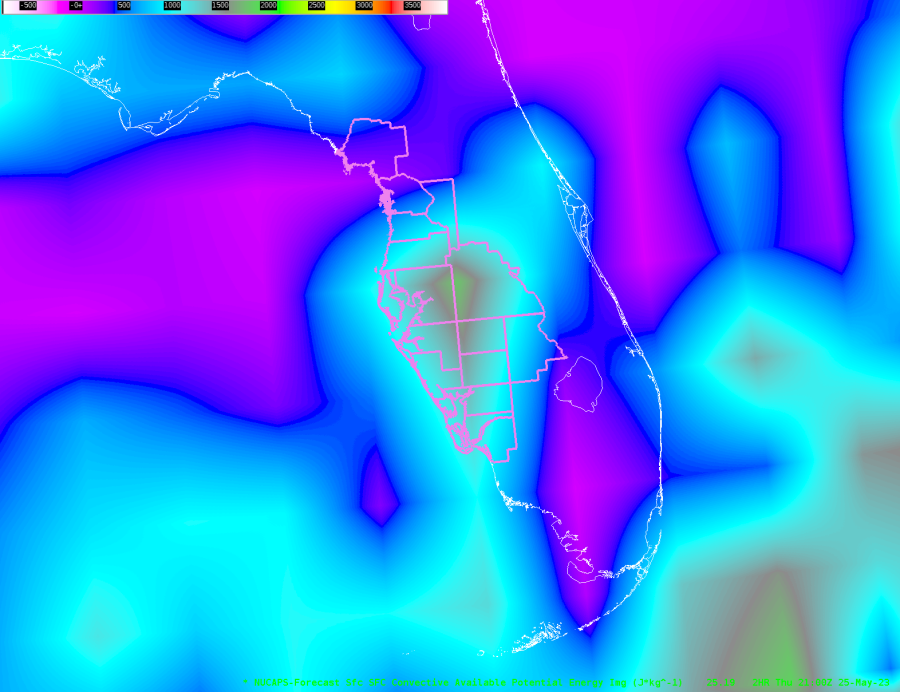 PHS shows a similar trend to NUCAPs with higher areas of SBCAPE across the central and southern CWA with lower values across the northern half of the CWA. However, the color scale on the online version of PHS is difficult to interpret as the gradient ramps up from light red to dark red. So, you cannot really pinpoint specific values of SBCAPE. However, you are able to see areas of lower SBCAPE and areas of higher SBCAPE at a glance.
PHS shows a similar trend to NUCAPs with higher areas of SBCAPE across the central and southern CWA with lower values across the northern half of the CWA. However, the color scale on the online version of PHS is difficult to interpret as the gradient ramps up from light red to dark red. So, you cannot really pinpoint specific values of SBCAPE. However, you are able to see areas of lower SBCAPE and areas of higher SBCAPE at a glance. 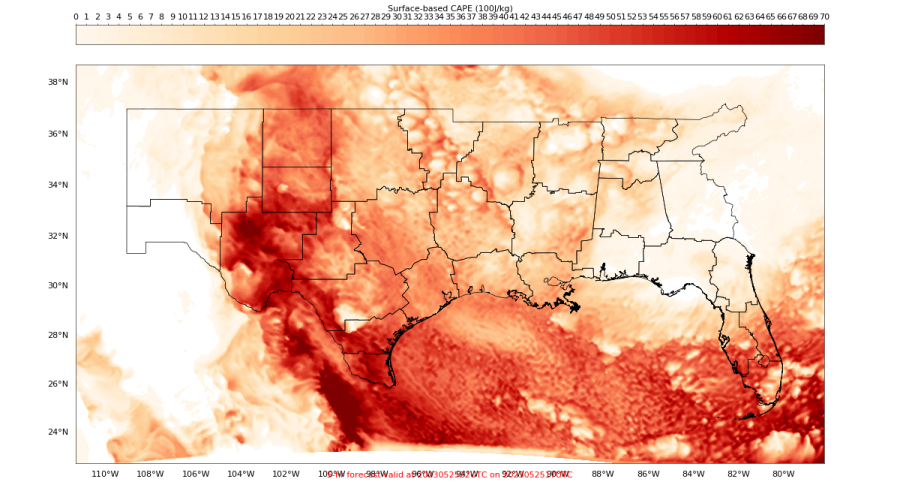
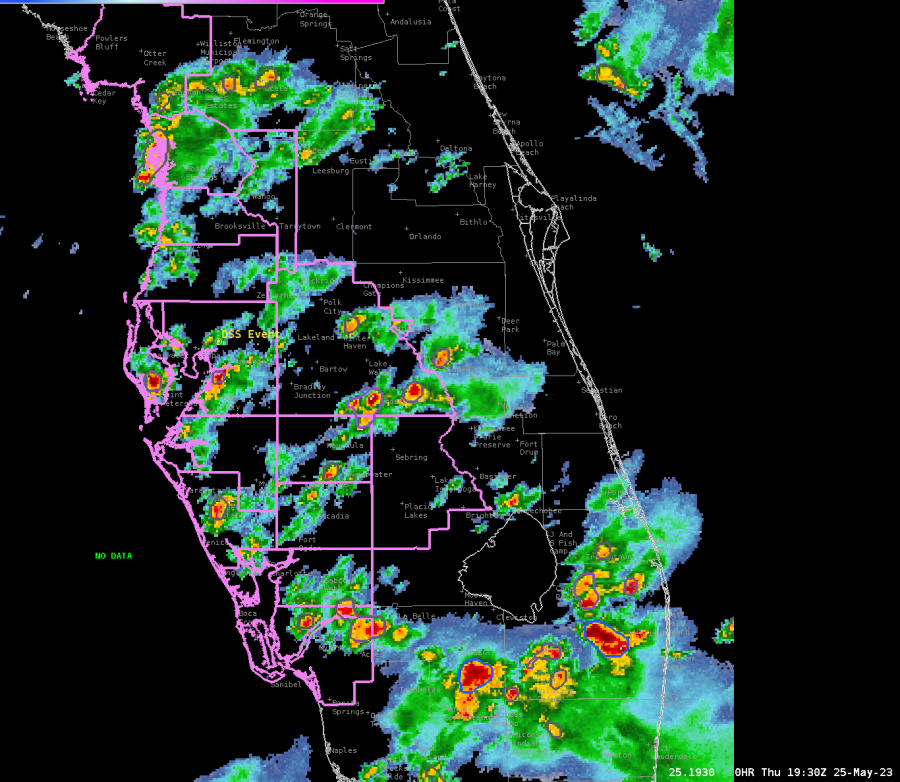 The Octane Speed Sandwich product further confirms that storms are remaining below severe limits as the strongest storms are noted over southeastern Florida this afternoon as of 1930Z. Not only do these products help us pinpoint areas of potential severe weather, but they also help us pinpoint areas of sub-severe weather.
The Octane Speed Sandwich product further confirms that storms are remaining below severe limits as the strongest storms are noted over southeastern Florida this afternoon as of 1930Z. Not only do these products help us pinpoint areas of potential severe weather, but they also help us pinpoint areas of sub-severe weather. 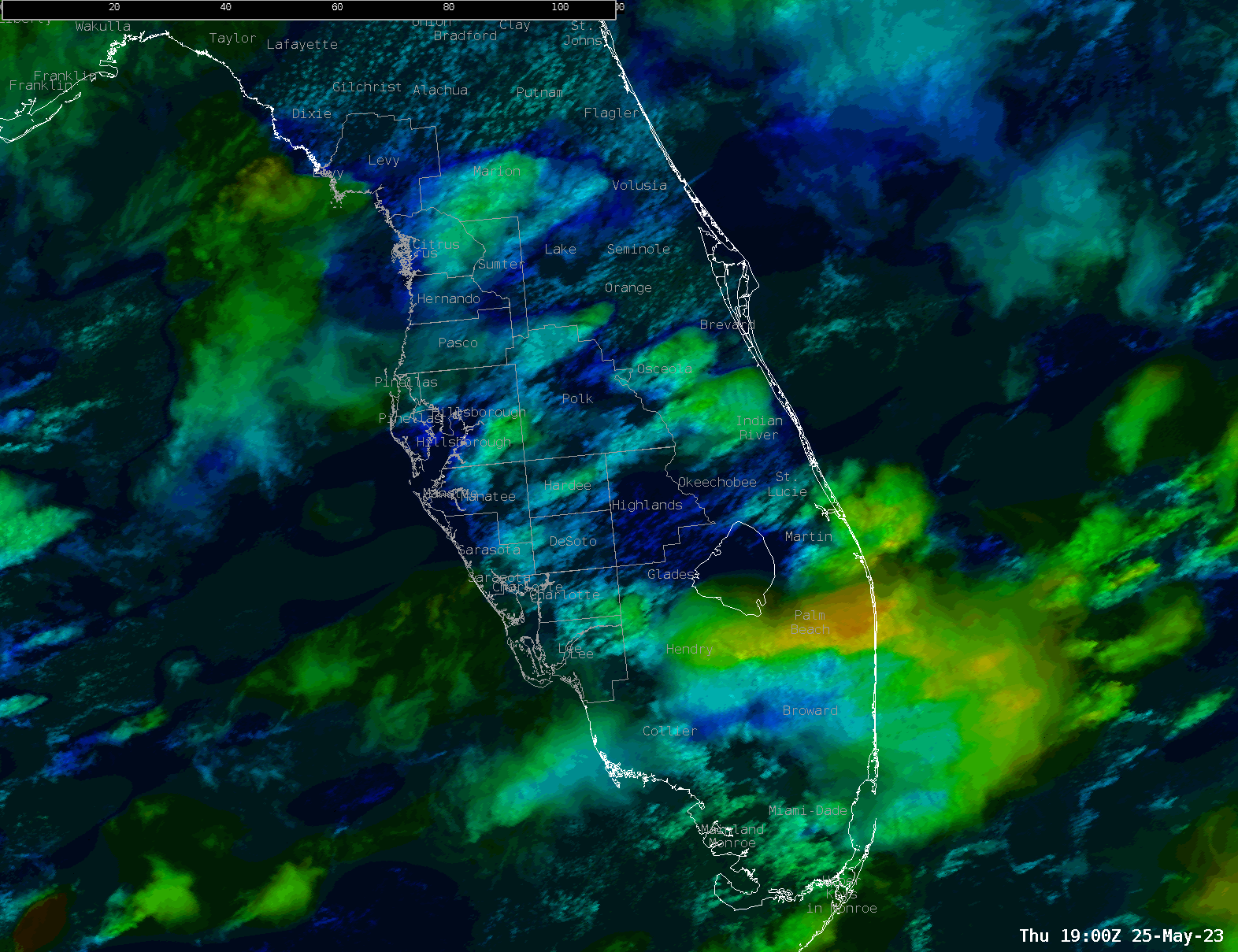 GLM shows lightning activity increasing across the Tampa CWA early this afternoon, and activity is expected to gradually increase in coverage as more thunderstorms develop through the late afternoon and early evening hours.
GLM shows lightning activity increasing across the Tampa CWA early this afternoon, and activity is expected to gradually increase in coverage as more thunderstorms develop through the late afternoon and early evening hours.  Lightning Cast around 1930Z shows lightning probabilities increasing across the Tampa CWA over the next hour. Pink contours represent a 75% chance of lightning in the next hour. Green represents a 50% chance, teal a 20% chance, and dark blue a10% chance of lightning in the next hour.
Lightning Cast around 1930Z shows lightning probabilities increasing across the Tampa CWA over the next hour. Pink contours represent a 75% chance of lightning in the next hour. Green represents a 50% chance, teal a 20% chance, and dark blue a10% chance of lightning in the next hour. 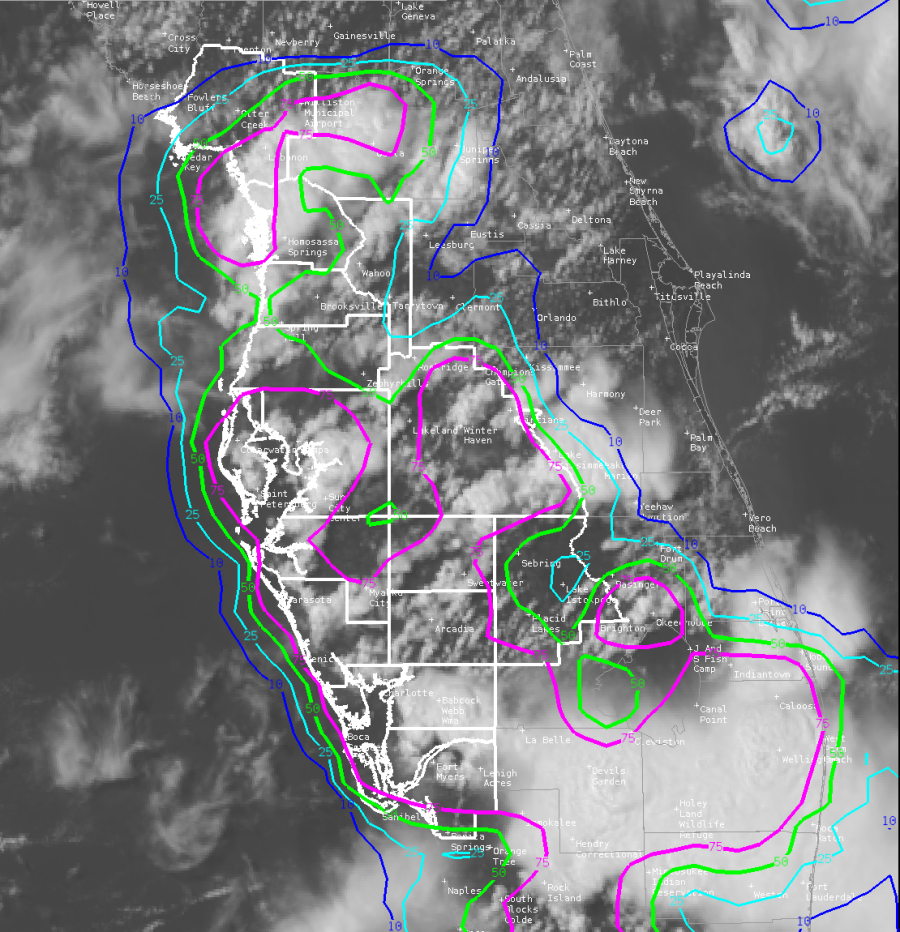 GLM showing lightning activity increasing across Florida from 1930Z through 2016Z across the Tampa CWA. Areas showing more oranges and yellows have shorter flashes and more lightning density. These areas help us know where stronger updrafts are located. The strongest updrafts at the time of this loop remain outside of the Tampa CWA.
GLM showing lightning activity increasing across Florida from 1930Z through 2016Z across the Tampa CWA. Areas showing more oranges and yellows have shorter flashes and more lightning density. These areas help us know where stronger updrafts are located. The strongest updrafts at the time of this loop remain outside of the Tampa CWA. 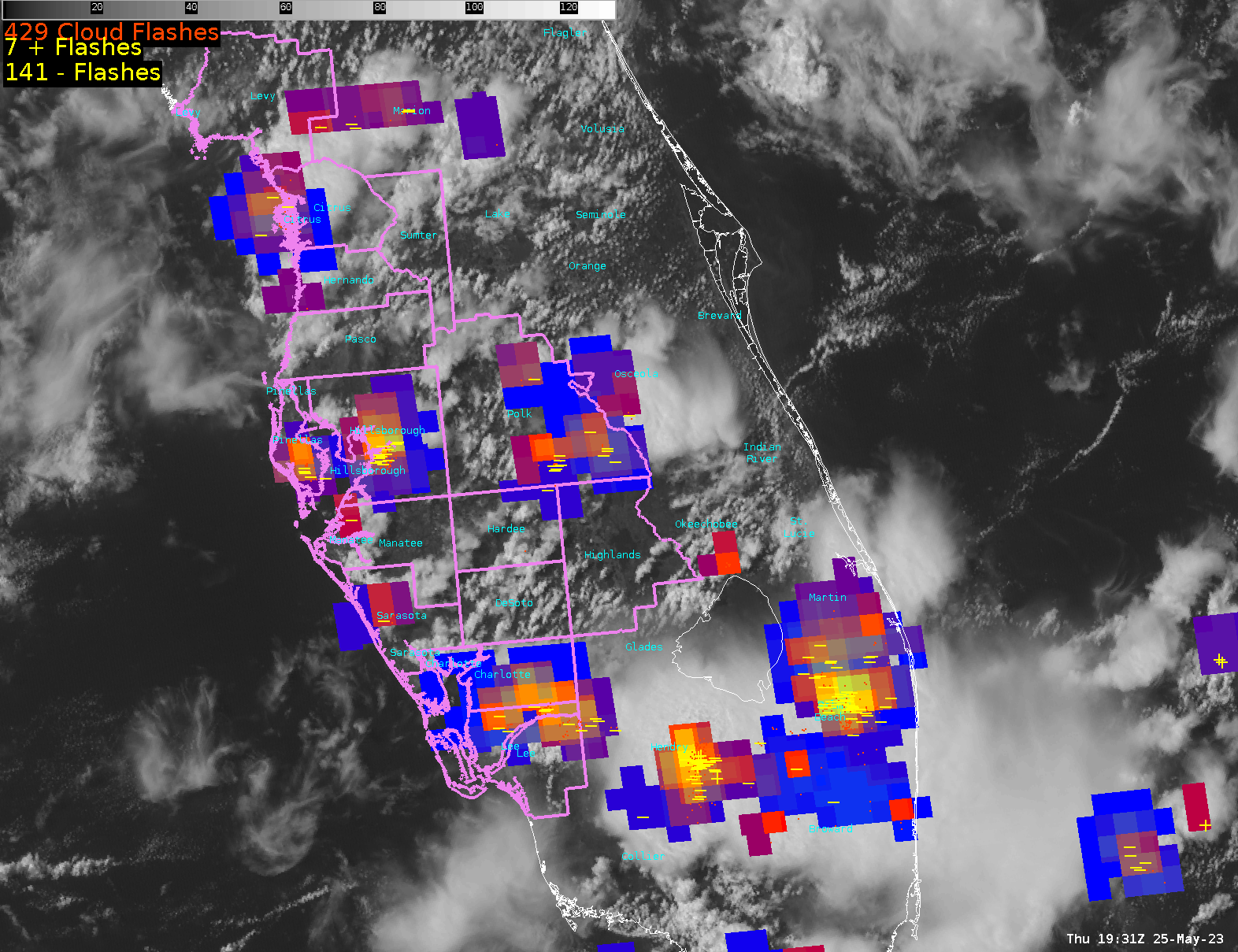 -Dwight Schrute
-Dwight Schrute